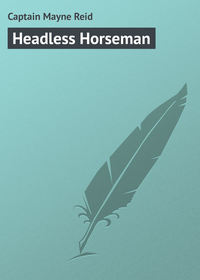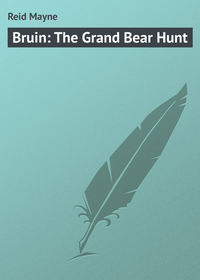 полная версия
полная версияThe Plant Hunters: Adventures Among the Himalaya Mountains
“Look up there!” said the botanist, pointing to a tall pine that grew near. “See those large cones. Inside them we shall obtain seeds, as large as pistachio-nuts, and very good to eat. By roasting them, we can make an excellent substitute for bread.”
“Ha, indeed!” exclaimed Caspar, “that is a pine-tree. What large cones! They are as big as artichokes. What sort of pine is it, brother?”
“It is one of the kind known as the ‘edible pines,’ because their seeds are fit for food. It is the species called by botanists Pinus Gerardiana, or the ‘neosa’ pine. There are pines whose seeds are eatable in other parts of the world, as well as in the Himalaya Mountains, – for instance, the Pinus cembra of Europe, the ‘ghik’ of Japan, the ‘Lambert’ pine of California, and several species in New Mexico, known among the people as ‘piñon’ trees. So you perceive that besides their valuable timber – to say nothing of their pitch, turpentine, and resin – the family of the pines also furnishes food to the human race. We shall get some bread from those cones whenever we desire it!”
So saying, Karl continued on in the direction of the lake.
“There again!” said he, pointing to a gigantic herbaceous plant, “rhubarb, you see!”
It was, in fact, the true rhubarb, which grows wild among the Himalaya Mountains, and whose great broad red-edged leaves, contrasting with its tall pyramid of yellow bracts, render it one of the most striking and beautiful of herbaceous plants. Its large acid stems – which are hollow and full of pure water – are eaten by the natives of the Himalayas, both raw and boiled, and its leaves when dried are smoked as tobacco. But there was a smaller species that grew near, which Ossaroo said produced much better tobacco; and Ossaroo was good authority, since he had already dried some of the leaves, and had been smoking them ever since their arrival in the valley. In fact, Ossaroo was quite out of betel-nut, and suffered so much from the want of his favourite stimulant, that he was glad to get any thing to smoke; and the “chula,” or wild rhubarb-leaves, answered his purpose well. Ossaroo’s pipe was an original one certainty; and he could construct one in a few minutes. His plan was to thrust a piece of stick into the ground, passing it underneath the surface – horizontally for a few inches, and then out again – so as to form a double orifice to the hole. At one end of this channel he would insert a small joint of reed for his mouth-piece, while the other was filled with the rhubarb tobacco, which was then set on fire. It was literally turning the earth into a tobacco-pipe!
This method of smoking is by no means uncommon among the half-civilised inhabitants of India as well as Africa, and Ossaroo preferred a pipe of this kind to any other.
Karl continued onward, pointing out to his companions several species of edible roots, fruits, and vegetables which the valley contained. There were wild leeks among the number. These would assist them in making soup. There were fruits too, – several species of currants, and cherries, and strawberries, and raspberries, – kinds that had long been introduced to European gardens, and that to Karl and Caspar looked like old acquaintances.
“And there!” continued Karl, “see the very water produces food for us. Look at the lotus, (Nelumbium speciosum). Those large pink and white flowers are the flowers of the famed lotus. Its stalks may be eaten, or, if you will, their hollow tubes will serve us as cups to drink, out of. There, too, is the horned water root (Trapa bicornis), also excellent eating. Oh! we should be thankful. We are well provided with food.”
Yet the heart of Karl was sore while thus endeavouring to talk cheerfully.
Chapter Forty Five.
New Survey of the Cliff
Yes, the hearts of all three were far from being contented, though they returned to the hut laden with fruits, and roots, and nuts, and vegetables; out of which they intended to concoct a better dinner than they had been lately accustomed to.
The rest of that day was spent about the hut, and a good deal of it was given up to culinary operations. Not that any of the party cared so much for a good dinner; but being thus engaged prevented them from reflecting as much as they would otherwise have done upon their painful situation. Besides, they had no other work to do. They had no longer a motive for doing any thing. Up to that moment the preparing the ropes and timbers of the bridge had kept them employed; and the very work itself, combined with the hope which they then felt, enabled them to pass the time pleasantly enough. Now that these hopes were no more, – that their whole scheme had ended in failure, they felt restless, – and could think of nothing upon which to employ themselves. Preparing their dinner, therefore, out of the new and varied materials that had come into their hands, was, at least, some distraction to their gloomy thoughts.
When dinner was ready, all of them ate heartily, and with a relish. Indeed, they had been so long without vegetables that these tasted to them as fine as any they had ever eaten. Even the wild fruits appeared equal to the best they had ever gathered from an orchard!
It was a little after midday, as they were enjoying this dessert. They were seated in the open air, in front of the hut, and Caspar was doing most part of the talking, he was doing his best to be cheerful, and to make his companions so as well.
“They’re the best strawberries I’ve eaten for a month,” said he; “but I think a trifle of sugar and a drop of cream would be an improvement. What say you, Karl?”
“It would,” he replied, nodding assent.
“We did wrong to kill all our cows,” continued Caspar, with a significant look at one of the yak-skins that lay near.
“By-the-bye,” said Karl, interrupting him, “I was just thinking of that. If we are to stay here all our lives, – oh!”
The painful reflection, again crossing Karl’s mind, caused him to exclaim as he did. He left his hypothetic sentence unfinished, and relapsed into silence.
Several days after this Karl left the hut, and, without telling his intention to either of his companions, walked off in the direction of the cliffs. Indeed, he had no very definite nor determined aim in so doing; a sort of hopeless idea had come into his mind of making the circuit of the valley, and once more surveying the precipice all round it.
Neither of the others offered to accompany him, nor did they question him as to his object in setting out. Both had gone about business of their own. Caspar had become engaged in making a wash-rod for his gun, and Ossaroo a net to catch the large and beautiful fish that abounded in the lake. Karl, therefore, was permitted to set forth alone.
On reaching the precipice, he turned along its base, and walked slowly forward, stopping every yard or two, and looking upward. Every foot – nay, I might say every inch, of the cliff did he scan with care, – even with more care than he had hitherto done; though that would appear hardly possible, for on the former occasions on which the three had examined it, their reconnoissance had been most particular and minute.
But a new idea had shadowed itself in the mind of Karl; and it was in obedience to this, that he now proceeded with a fresh examination of the precipitous enclosure that imprisoned them. It is true it was but a sort of forlorn hope that he had conceived; but a forlorn hope was better than no hope at all, and therefore Karl was determined to be satisfied.
The thought that had been forming in his mind was, that after all it might be possible for them to scale the cliff. That they could not do so by climbing he was already satisfied; as were all three. Of this their former examinations had convinced them. But there were other ways of getting up a precipice, besides merely climbing with one’s hands and feet; and one of these ways, as already said, had for some time been shadowing itself in the mind of Karl.
What plan, you will ask, had he now conceived? Did he design to make use of ropes?
Not at all. Ropes could be of no service to him in going up a cliff. They might, had they been fastened at the top; for then both he and his companions would soon have contrived some way of getting up the ropes. They could have made a ladder of a single rope by which they might have ascended, by simply knotting pieces of sticks at short intervals, to serve as rests for their feet, and they knew this well. Such a contrivance would have suited admirably, if they had been required to descend a precipice, for then they could have let the rope down, and fastened it at the top themselves. But to go up was altogether a different operation; and it was necessary for at least one to be above to render it at all practicable or possible. Of course, if one could have got to the top by any means, the others could have done so by the same; and then the rope-ladder would not have been needed at all.
No. Such a contrivance could not be used, and indeed they had never thought of it – since to the meanest comprehension it was plainly impossible. Karl therefore was not thinking of a rope-ladder.
Nevertheless it was actually about a ladder that he was thinking – not made of ropes, but of timber – of sides and rounds like any other ladder.
“What!” you will exclaim, “a ladder by which to scale the cliff! Why, you have told us that it was three hundred feet in sheer height? The longest ladder in the world would not reach a third of the way up such a precipice. Even a fireman’s ladder, that is made to reach to the tops of the highest houses, would be of no use for such a height as that?”
“Quite true! I know all that as well as you,” would have been Karl’s reply to your objections.
“What, then, Master Karl? Do you design to make a ladder that will be taller than all we have ever seen – tall enough to reach to the top of a precipice three hundred feet high? We know you have both energy and perseverance; and, after witnessing the way that you worked at the building of your bridge, and the skill with which you built it, we are ready to believe that you can accomplish a very great feat in the joiner’s line; but that you can make a ladder three hundred feet in length, we are not prepared to believe – not if you had a whole chest of tools and the best timber in the world. We know you might put a ladder together ever so long, but would it hold together? or even if it did, how could you set it up against the cliff? Never. Three of the strongest men could not do it, – nor six neither, – nor a dozen, without machinery to assist them; therefore scaling the cliff by means of a wooden ladder is plainly impracticable; and if that be your idea, you may as well abandon it.”
“Quite true, I know all this as well as you,” would have been Karl’s reply; “but I had no idea of being able to scale the cliff by means of a ladder. It was not of a ladder, but of ladders, I was thinking.”
“Ha! there may be something in that.”
Karl knew well enough that no single ladder could be made of sufficient length and strength to have reached from the bottom to the top of that great wall; or if such could be constructed, he knew equally well that it would be impossible to set it up.
But the idea that had been forming in his mind was, that several ladders might effect the purpose – one placed above another, and each one resting upon a ledge of the cliff, to which the one next below should enable them to ascend.
In this idea there was really some shadow of practicability, though, as I have said, it was but a very forlorn hope. The amount of its practicableness depended upon the existence of the ledges; and it was to ascertain this that Karl had set forth.
If such ledges could be found, the hope would no longer have been forlorn. Karl believed that with time and energy the ladders might be constructed, notwithstanding the poor stock of carpenter’s tools at their service; though he had scarce yet thought of how the holes were to be made to receive the rounds, or how the ladders themselves might be set upon the ledges, or any other detail of the plan. He was too eager to be satisfied about the first and most important point – whether there were ledges that would answer the purpose?
With his eyes, therefore, keenly scanning the face of the cliff, he kept on along its base, walking slowly, and in silence.
Chapter Forty Six.
Karl climbs the Ledge
He continued on until he had reached that end of the valley most remote from the hut, and along the whole of the cliffs that he passed his reconnoissance had been fruitless. He saw many ledges, and some of considerable width – quite wide enough to rest a ladder upon, and also allow it a proper lean to the wall. Some were higher and some lower; but unfortunately they were not above one another, as Karl desired to find them. On the contrary, they were far apart – so that if one of them could have been reached by means of a ladder, as many of them might, this would in no way facilitate communication with the one that was higher up.
Of course then, for Karl’s purpose, these ledges were of no avail; and, after observing their relative situations, he passed on with looks of disappointment. At the farthest end of the valley – that is, the place farthest from the hut – there was a little bay, or indentation, in the cliffs. As already stated, there were several of these at intervals around the valley, but the one in question was the largest of any. It was very narrow, only a few yards in width, and about a hundred in depth – that is, a hundred yards from the line, which indicated the general outline of the valley, to the apex of the angle where the indentation ended. Its bottom was nearly upon the same level with that of the valley itself, though it was raised a little higher in some places by loose rocks, and other débris that had fallen from the impending cliffs.
Karl had entered this bay, and was regarding its cliffs all around with intense eagerness of glance. Any one who could have seen him at that moment would have observed that his countenance was brightening as he gazed; and that pleasant thoughts were springing up within his bosom. Any one who had seen that face but the moment before, and had looked upon it now, could not fail to have noticed the change that had so suddenly come over it – a perfect contrast in its expression. What had produced this metamorphosis? Something of importance, I warrant; for the young botanist, naturally of a sober turn, but now more than ever so, was not given to sudden transitions of feeling. What, then, was the cause of his joy?
A glance at the cliff will answer these interrogatories.
At the first glance it might be noted that that part of the precipice surrounding the bay – or ravine, as it might more properly be called – was lower than elsewhere, – perhaps not quite three hundred feet in height. It was not this peculiarity, however, at which Karl was rejoicing. A ladder of three hundred feet was not to be thought of any more than one of three thousand. It was that he had just observed upon the face of the cliff a series of ledges that rose, shelf-like, one above the other. The rock had a seamed or stratified appearance, although it was a species of granite; but the strata were not by any means regular, and the ledges were at unequal distances from each other. Some, too, were broader than the rest, and some appeared very narrow indeed; but many of them were evidently of sufficient width to form the stepping-place for a ladder. The lower ones especially appeared as though they might easily be scaled by a series of ladders, each from twenty to thirty feet long, – but with regard to those near the top, Karl had great doubts. The shelves did not seem more distant from each other than those below, but their horizontal breadth appeared less. This might possibly be an optical delusion, caused by the greater distance from which they were viewed; but if so, it would not much mend the matter for the design which Karl had in view – since the deception that would have given him an advantage in the breadth would have been against him in the height, making the latter too great, perhaps, for any ladder that could be got up.
If you have ever stood by the bottom of a great precipice, you may have noticed how difficult it is to judge of the dimensions of an object far up its face. A ledge several feet in width will appear as a mere seam in the rock, and a bird or other creature that may be seen upon it, will, to the eyes of the beholder, be reduced far below its real bulk. Karl was philosopher enough to understand these things, he had studied in an elementary way, the laws of optics, and therefore was not going to come to conclusions too hastily.
In order the better to form judgment about the breadth of the ledges, and the height of the respective intervals between them, he stepped back as far as the ground would permit him.
Unfortunately this was not far, for the cliff on the other side, as already stated, was but a few paces distant. Consequently he was soon stopped by the rocks, and his situation for viewing the upper portion of the cliff was anything but an advantageous one.
He scrambled up one of the highest boulders, and took his survey from its top, but he was still not satisfied with his “point of view.” He saw, however, that it was the best he could obtain; and he remained for a good while upon his perch – with eyes bent upon the opposing precipice, now fixed upon a particular spot, and now wandering in one long sweep from bottom to top, and back again from top to bottom.
During this operation the expression upon his face once more changed to one of deep gloom, for he had discovered an obstacle to his designs that appeared insurmountable. One of the spaces between two of the ledges was too great to be spanned by a ladder, and this, too, was high up the cliff. It could never be scaled!
He noticed that the first ledge from the bottom was about half as high from the ground as this one was from that immediately below it.
Hitherto he had been but guessing at the height; but it now occurred to him that he should throw conjecture aside, and ascertain by actual measurement the distance from the ground to the first ledge. This might be easily accomplished – Karl saw that, – and once done, it would give him a better idea of the distance between the ledges high up.
It has been stated that the measurement could be easily made, and that Karl knew this; but how? The ledge appeared to be full forty feet from the ground, and how was it to be reached by a measuring rule? But Karl had no measuring rule; and it was not in that way he intended to go about it.
You will be conjecturing that he looked out for a tall sapling, of sufficient length to reach the ledge, and then afterwards ascertained the number of feet and inches of the sapling. Certainly this mode would have done well enough, and Karl would very likely have made use of it, had not an easier offered itself – or one that at the moment appeared readier to him. He could have told the height by triangulation, but that would also have involved the procuring of a sapling – and some tedious calculation besides, which would have required time, with not the most certain results either.
Both these plans had occupied his thoughts for a while. The first was rejected on account of the difficulty of obtaining a rod of sufficient length, – the second was set aside by Karl just then perceiving that without much difficulty, he might climb up to the ledge itself. There was a portion of the rock below with a slanting face, and here and there some broken hollows and jutting points that would serve him as foot-holds.
Once upon the ledge, the measurement would be simple enough. It would be only to let down a string with a small stone at the end, like a plumber’s line; and then mark how much string it required to reach the ground.
He chanced to have about him a longish piece of rawhide thong, that would serve admirably, and to carry out his purpose, he at once determined upon ascending to the ledge.
Drawing the thong from his pocket, and attaching to one end of it the piece of stone, he approached the cliff, and commenced scrambling upward.
He found it a more difficult task than it had appeared, and it was just as much as he could do to reach the ledge in safety. Had it been Caspar, the climbing would have been a mere bagatelle, used, as the young hunter had been, to the precipices of the Alps while following the rock-loving chamois.
But Karl was no great hand at such gymnastic exercises; and he was all out of breath, and a little bit frightened at his rashness, before he had placed himself safely on the shelf.
Stepping along it, therefore, till he reached a point where the cliff below was vertical, he dropped his stone and line, and soon completed his measurement. Alas! it proved to be far higher than he had conjectured in viewing it from below. His spirits fell as he contemplated the result. He was now certain that the space higher up could not be spanned by any ladder they might be able to construct.
With sad heart, he returned to the place where he had made the ascent, intending to go down again. But it is sometimes easier to say go down than to do it; and to Karl’s great consternation he saw at the first glance that he could no more go down than fly upward into the air. Beyond a doubt he was in a fix; regularly “nailed” upon the cliff.
Chapter Forty Seven.
Karl in a Fix
It is not difficult to comprehend the reason. Any one who has ever climbed up a steep ascent, – such as a piece of wall, the mast of a ship, or even an ordinary ladder, – will have noticed that the going up, is much easier than the getting down again; and where the ascent is very steep and difficult, it is quite possible that a person may make their way to the top, without being able to get back to the bottom. The difficulty of descending is much greater than that of ascending. In the latter, you can see where you are to set your feet, and also what you are to take hold of with your hands; whereas, in the former you have not this advantage; but must grope your way downward, and are therefore continually exposed to the danger of missing your footing, and being precipitated to the bottom.
This was just the situation in which the plant-hunter found himself. It was as much as he had been able to pull himself up; it was more than he could do to let himself down again; this he perceived at a single glance.
It is true that the rock slanted a little, and he had clearly seen this from below. Now that he looked at it from above, he could scarcely perceive any slant. It appeared almost vertical, and it was full forty feet to the bottom; a fearful height when viewed from above; he wondered how he had been able to climb up at all, and he was now vexed with himself for having been so rash and foolish.
But he could not stay there all night. Something must be done, to free him from his unpleasant situation; and, gathering resolution, he made an attempt to descend.
He knelt down upon the ledge, with his face turned toward the cliff and his back outwards. Then, grasping the rock, in his hands, he allowed his feet to slip over. He succeeded in finding the uppermost steps, but then came the difficulty. He dared not let go with his hands, so as to get another step downward; and, on lowering his feet to feel for a fresh foothold, he could not discover any. Repeatedly he ran his toes over the face of the rock, groping for a notch or jutting point, but he could find nothing upon which to rest either foot, and he was at length obliged to draw them up, and place himself back upon the ledge.
He now bethought him that there might be a better place for making the descent; and, rising to his feet, he proceeded to search for it. He had no difficulty in passing along the ledge; it was several feet in width, and he could walk erect upon it without danger. It extended for nearly fifty yards along the face of the cliff, and was of nearly equal breadth all the way.
Karl proceeded along it from one end to the other, at every step or two stopping and looking downward.
But his examination ended in disappointment. There was no path leading from it, at all practicable for any other creature than a cat, or some other animal with crooked claws, – at all events, there was no place where Karl himself could get down, – and he turned to go back to the point where he had ascended, with a feeling of apprehension that he was not going to get down at all!









